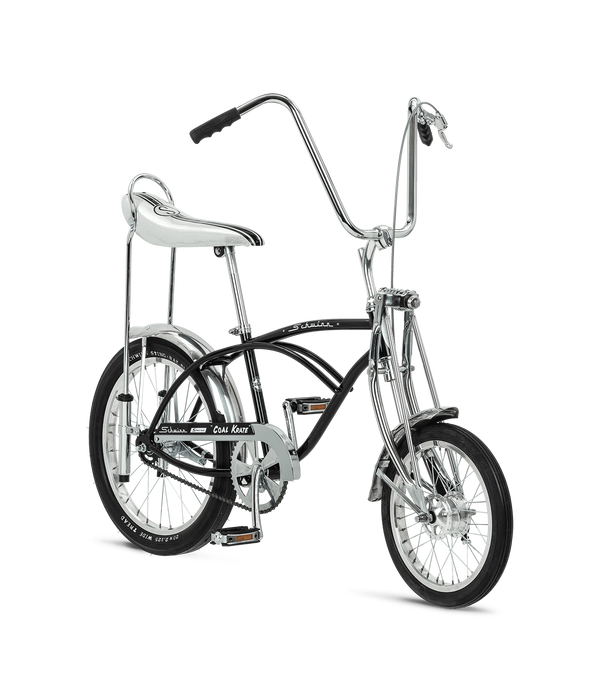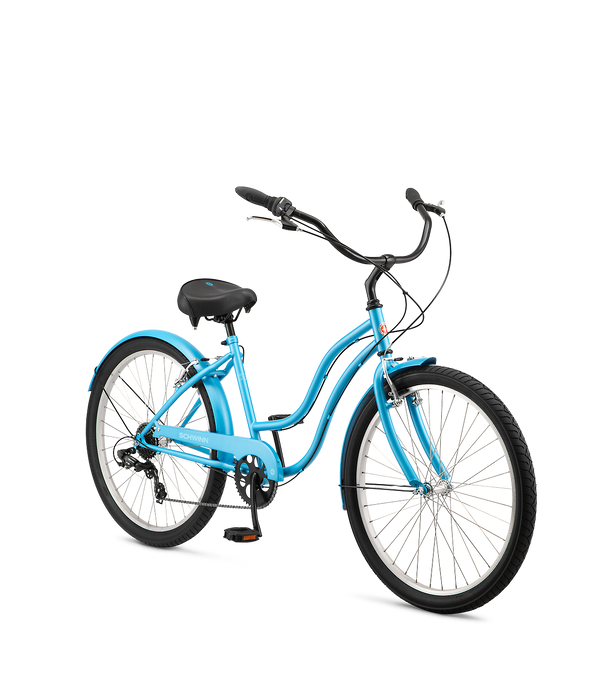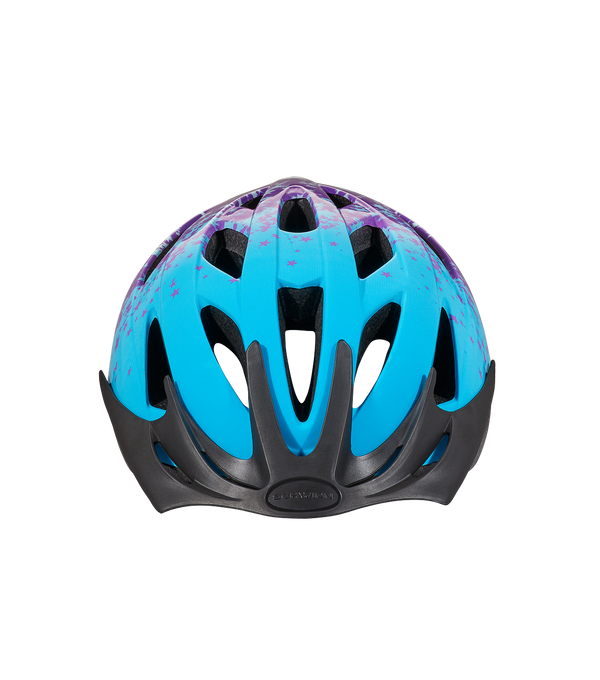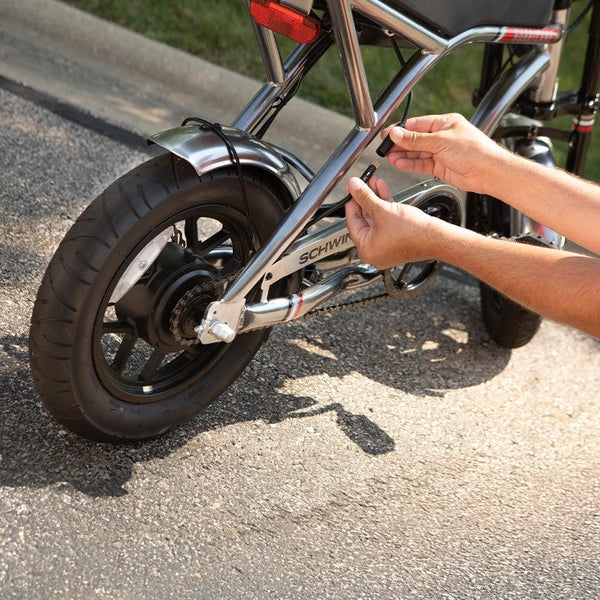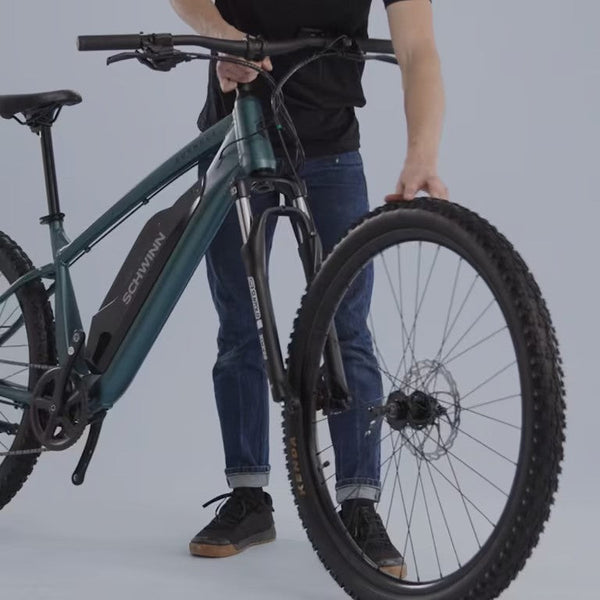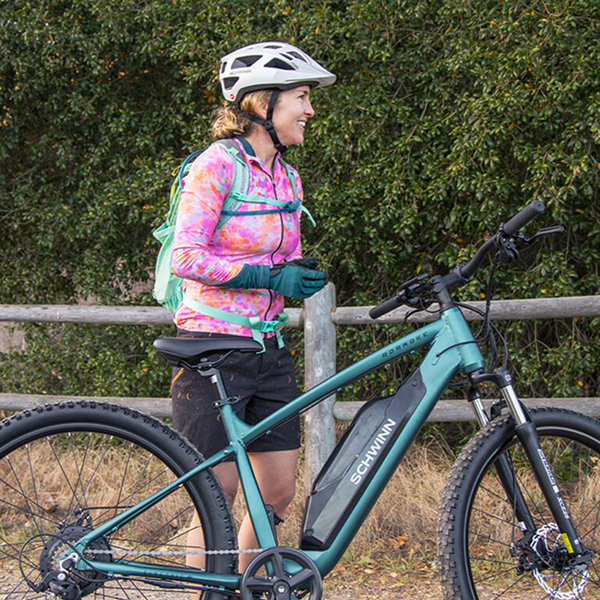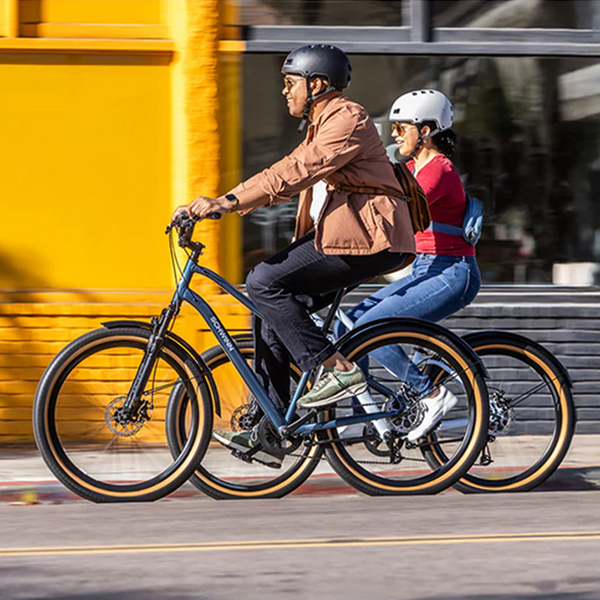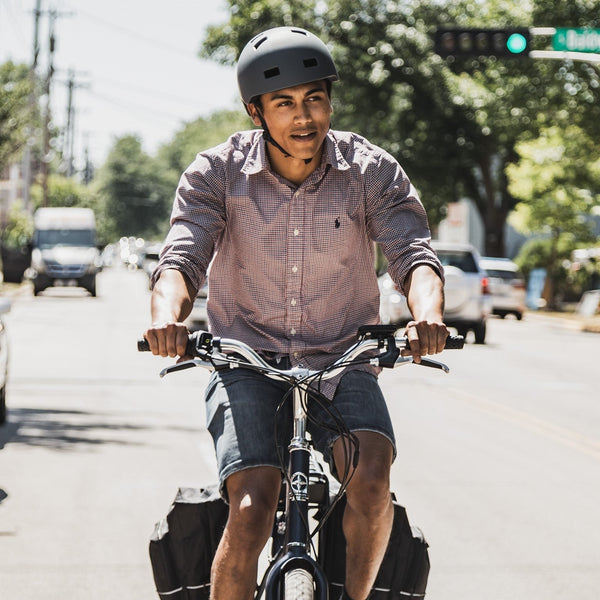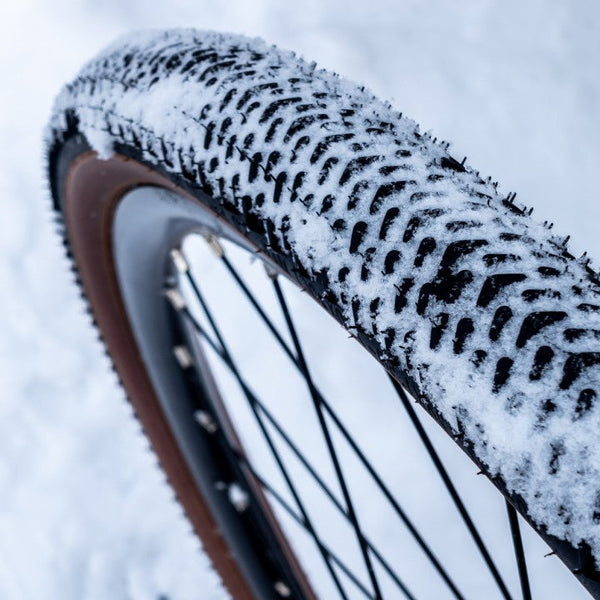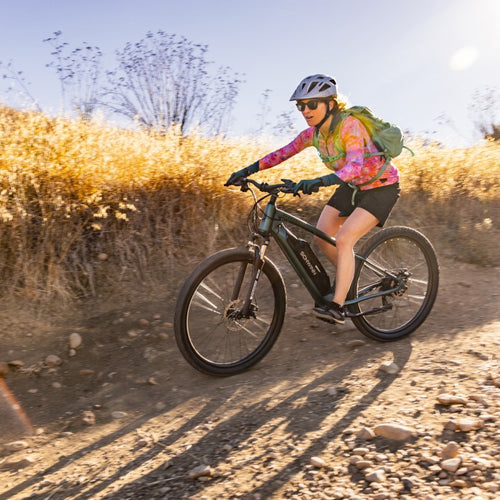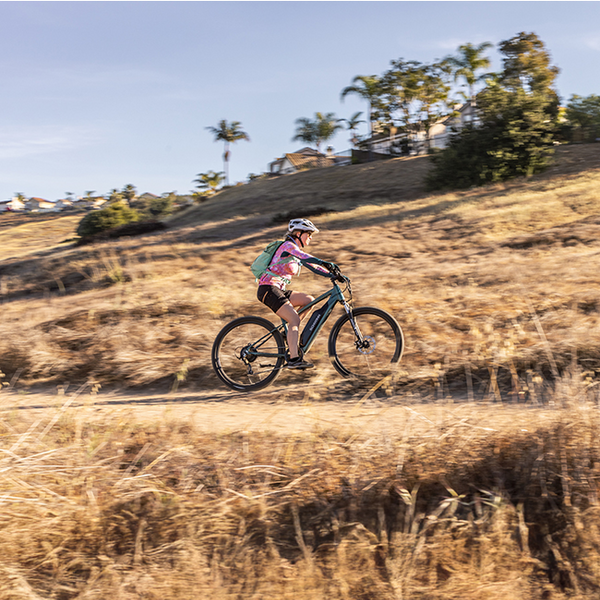
Q: What kind of motors do Schwinn bikes have?
A: All Schwinn e-bikes have hub-drive motors. A hub-drive motor is located on the back axle of the bike and works by spinning the back wheel, creating the feeling of being pushed. You might see other bikes with mid-drive motors, which are placed by the pedals. However, we chose the hub-motor because it allows you to use both pedal assist and throttle options and does not require continuous pedaling the way most mid-drive motors are set up.
Q: How big are the motors and what does it mean?
A: Our e-bike bikes all have 250-watt motors. We’ve calculated just the right balance of motor-wattage to battery capacity to give you the power you need and the distance you want. A higher watt motor might sound impressive, but it can drain the battery faster, leaving you with less range.

Q: So how far can I go on a fully charged battery?
A: Fully charged, a 250-watt motor can go about 22.5 miles at 20 mph, or up to 45 miles at lower speeds. However, these numbers can vary depending on riding conditions, bike weight, and rider weight.
Q: What riding variables can impact the battery?
A: Riding variables can have a great impact on how far the battery range can take you. Factors like the temperature outside, the rider's weight, and the elevation change over the course of a ride all play a role in a battery's efficiency. The weight of the bike itself is important too, and Schwinn's e-bikes are all designed to be as light as possible, allowing for greater battery range.

Q: Do e-bikes have different top speeds?
A: Most electric bikes are what’s known as Category 2 and have a top speed of about 20 mph regardless of motor wattage. That's because the federal government has set a limit on e-bike speed. Category 3 e-bikes can go faster, but they have more restrictions on bike paths, trails, and in cities. However, this speed limit only refers to the motor. You can go faster than that, of course, if you pedal past that speed without additional assistance from the motor.
Q: What factors went into Schwinn designing their e-bikes?
A: We considered everything we talked about above and ultimately picked the right balance of motor, wattage, and battery to give e-bike riders the range they need while keeping cost and weight down.
To learn more about our different e-bike models and what they have to offer, check out our list of frequently asked e-bike questions about our Coston and Marshall models!
